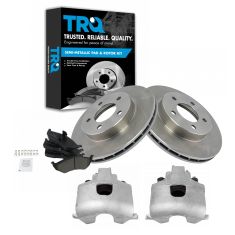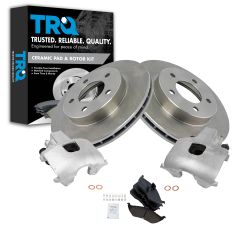1ABFS03143-Dodge Chrysler Eagle Front Ceramic Brake Pad & Rotor Kit TRQ BKA11989

Replaces
1997 Eagle Vision Front Ceramic Brake Pad & Rotor Kit TRQ BKA11989

Product Reviews
Loading reviews
5.00/ 5.0
1
1review
Great to hit the reset button!
August 21, 2021
Installing this kit on my 97 Intrepid not only resulted in better braking, but ruled out needing wheel bearings, which a shop said I needed. Turns out it was just a piece of metal on the caliper scraping the rotor cuz the pads were so low!
Customer Q&A
No questions have been asked about this item.
Eagle is a registered trademark of FCA US LLC. 1A Auto is not affiliated with or sponsored by Eagle or FCA US LLC.
See all trademarks.











